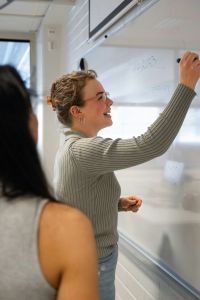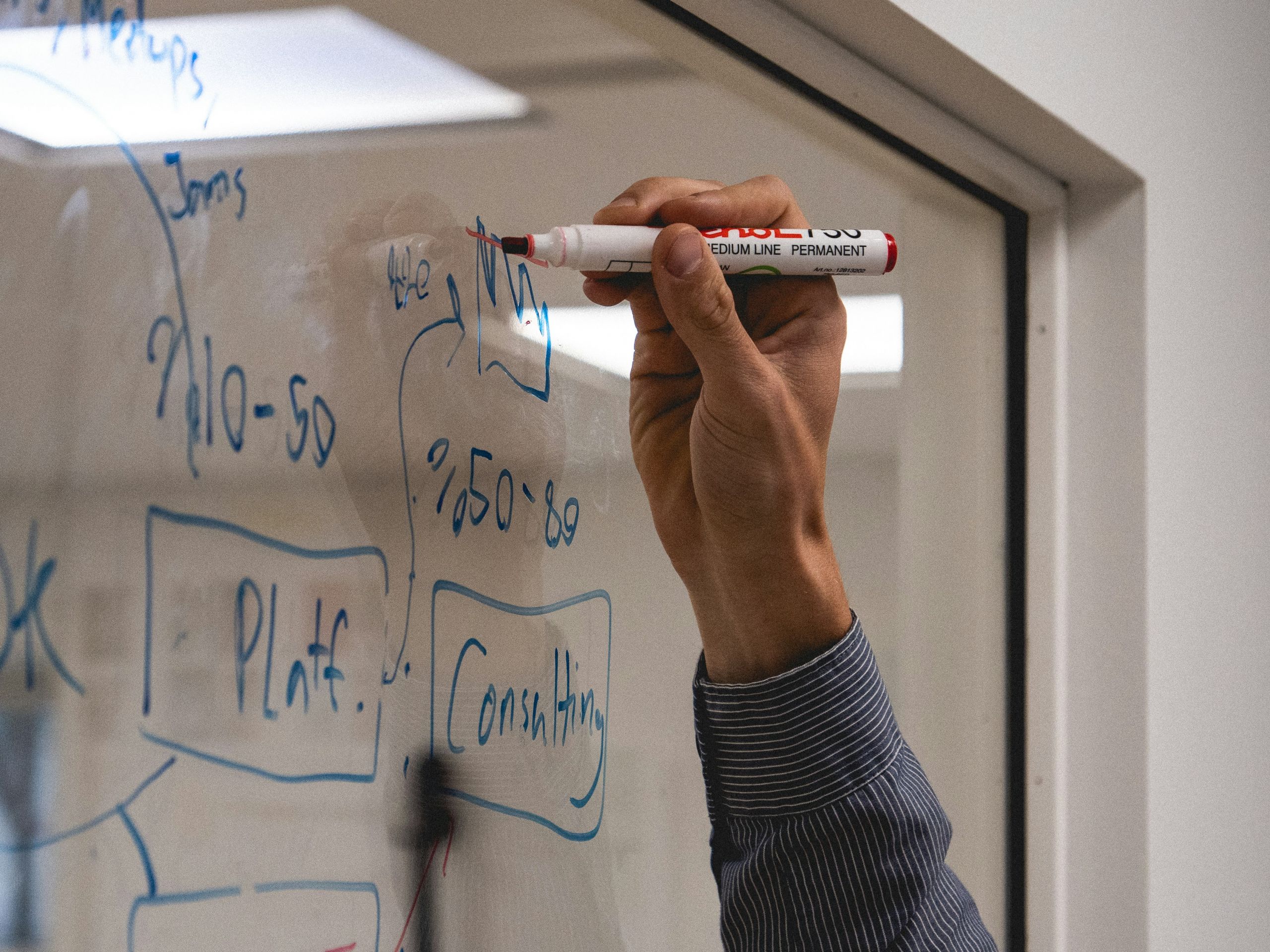Implementing the Building Thinking Classroom framework by Peter Liljedahl was definitely an interesting journey this past school year. At the outset, I was really motivated by the book’s ideas and the potential it had for transforming my English classroom into a more dynamic and engaging space for students to learn. This transformative classroom was something I was desperately craving–I needed change!
During the first semester, I found success in implementing aspects of the first toolkit. One of the key strategies that worked well for me was the use of visibly random groups; I noticed a significant increase in student collaboration and interaction. It was refreshing to see students working with different peers on a regular basis, which not only fostered a sense of community but also encouraged them to consider different perspectives when analyzing literature or writing essays. It took some time for students to adjust and for me to work through some kinks in the process, but ultimately, I found this aspect of the BTC framework useful and adaptable to any classroom.
Additionally, incorporating vertical non-permanent surfaces (VNPS) into classroom activities was a game-changer. Providing students with opportunities to brainstorm, collaborate, and solve problems on vertical surfaces, like whiteboards, not only encouraged active participation but also allowed for a more fluid exchange of ideas. I saw a notable improvement in students’ critical thinking skills and creativity when they were given the freedom to physically engage with the material in this way.
“Providing students with opportunities to brainstorm, collaborate, and solve problems on vertical surfaces, like whiteboards, not only encouraged active participation but also allowed for a more fluid exchange of ideas.”
What Went Really Well:
- Increased Student Engagement: The visibly random groups strategy significantly boosted student participation and collaboration. During literature discussions, students were more willing to share their insights and actively listen to their peers’ perspectives because we had layered in these random groups throughout the year.
- Improved Critical Thinking Skills: Incorporating vertical non-permanent surfaces (VNPS) led to noticeable improvements in students’ critical thinking and problem-solving abilities. Students generated more diverse and complex ideas when working on whiteboards because they felt comfortable taking risks and were listening to ideas of everyone in their groups.
- Enhanced Community Building: The frequent use of random grouping fostered a stronger sense of community among students. For instance, during group activities, students from different social circles collaborated more readily, leading to a more inclusive classroom environment.
- Increased Creativity: Providing opportunities for students to engage with material in non-traditional ways sparked their creativity. For example, allowing students to illustrate scenes from a novel encouraged them to think imaginatively about the text. I liked having them display their thinking using words and images to show their thinking.
- Positive Teacher-Student Relationships: Implementing the framework allowed for more personalized interactions with students. I was craving more one-on-one time with students, and the quick conferences at the vertical surfaces allowed me to interact more with my students. It was some of my favorite times to walk around and connect with them.

However, as the school year progressed into the second semester, I encountered challenges in maintaining the momentum of the framework’s implementation. I realized that while the initial excitement and novelty of the strategies had sparked engagement and enthusiasm among my students, sustaining that level of energy over an extended period required more intentional planning and support.
Reflecting on my experience, I’ve come to appreciate how the Building Thinking Classroom framework motivated me to try something new and innovative in my teaching practice. Despite the setbacks encountered during the second semester, I remain optimistic about the potential of the framework to enhance student learning in the English classroom and hope to continue learning and implementing into the next school year.
Looking ahead to next year, I’m excited to revisit the framework with a fresh perspective and explore different tweaks and adjustments that can better align with the unique demands of teaching English. This might involve incorporating more structured routines and scaffolding to support student autonomy and ensure that the strategies remain relevant and impactful throughout the entire school year.
Areas for Improvement/Changes for Next Year:
- Sustainability of Implementation: Maintaining momentum over an extended period proved challenging. Next year, I plan to develop a more structured plan for sustaining the implementation of the framework throughout the entire school year, perhaps by scheduling regular reflection sessions or seeking out a teaching partner to implement the toolkits for support and accountability.
- Assessment Integration: Finding effective ways to assess student learning within the framework was a challenge. Next year, I intend to explore alternative assessment methods that align more closely with the collaborative and inquiry-based nature of the framework, such as peer assessment or portfolio-based evaluation.
“While the journey with the Building Thinking Classroom framework had its challenges, it has ultimately been a valuable learning experience that has encouraged me to continue experimenting with new pedagogical approaches to meet the diverse needs of my students.”
Overall, while the journey with the Building Thinking Classroom framework had its challenges, it has ultimately been a valuable learning experience that has encouraged me to continue experimenting with new pedagogical approaches to meet the diverse needs of my students.
Previous Posts In This Series: Early Steps in a Transformative Journey towards a Thinking Classroom & Navigating Building Thinking Classrooms in ELA: A Mid-Year Reflection
Resources
Please login or register to claim PGPs.
Alternatively, you may use the PGP Request Form if you prefer to not register an account.



